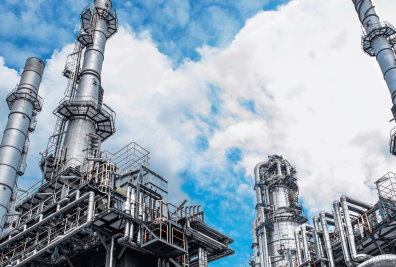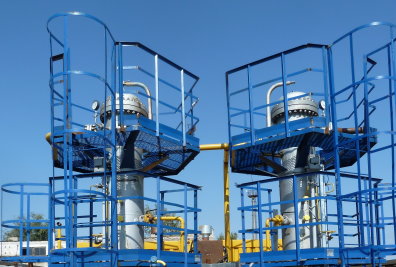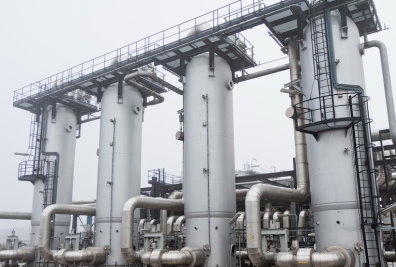Natural and associated petroleum gases contain condensed and vaporous moisture that can cause serious damage to pipelines. Water forms solid hydrates with some gas components. Being deposited on the walls of pipelines and equipment, the hydrates tend to reduce their internal cross section and form plugs in the system. Availability of acidic components (hydrogen sulfide, carbon dioxide, and others) in wet hydrocarbon gas results in severe equipment corrosion. To avoid such problems during transportation and treatment the gas is dried.
Absorption dryers are designed to remove water from natural or associated petroleum gas stream by absorbing water vapor using a special liquid absorbent, typically di- or triethylene glycol.



A typical glycol gas dehydration unit consists of two main units. At first, concentrated glycol reacts with humid hydrocarbon gas absorbing water and drying gas in the absorption column. Then the dried gas is fed to the gas pipeline or for further treatment, and the water-saturated glycol solution is supplied to the weathering tank where dissolved hydrocarbons are being separated, after which glycol is heated and comes into the second unit - glycol recovery column. In the column the previously absorbed by glycol water evaporates, and glycol concentration rises to the desired purity. The lean glycol which water has been removed re-enters the absorption column.
Glycol drying is the most routine method of rough gas drying that is sufficient for pipeline transportation and using such gas as a fuel. Moreover, glycol drying ensures that gas dew point temperature by water meets the requirements of STO Gazprom 089-2010 / Combustible natural gas supplied and transported through main gas pipelines.
Major Advantages of Absorption Gas Drying:
- Simple process flowsheet
- Low pressure drops resulting from hydraulic resistance of the absorption column
- Low operational expenses
- Process continuity
Limitations of Glycol Gas Drying:
- Average drying level
- Probability of absorbent foaming in case there are significant amounts of heavy hydrocarbons in gas composition


